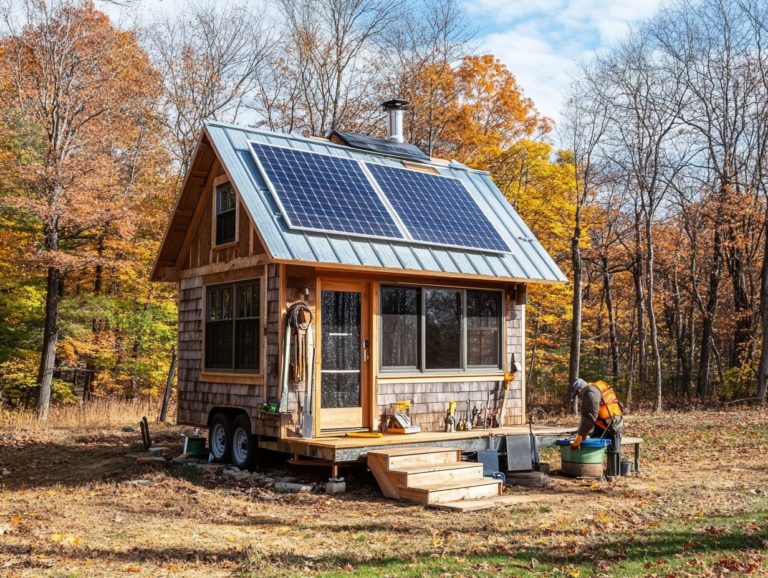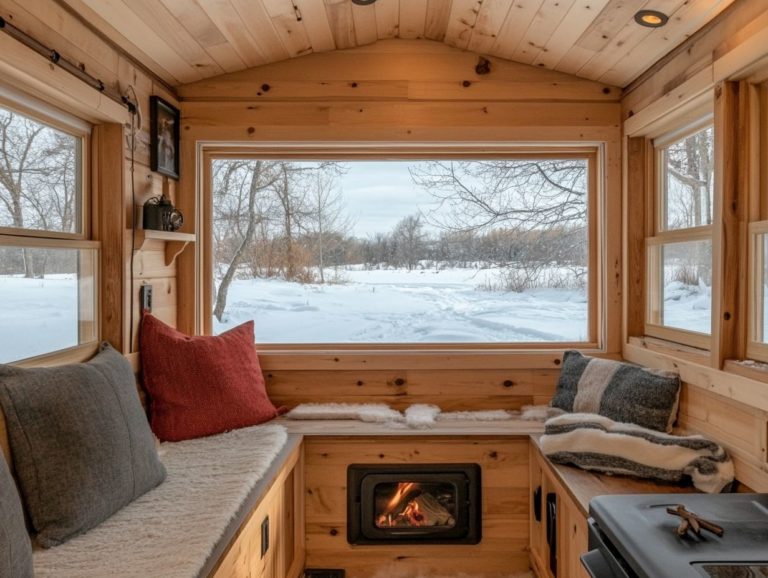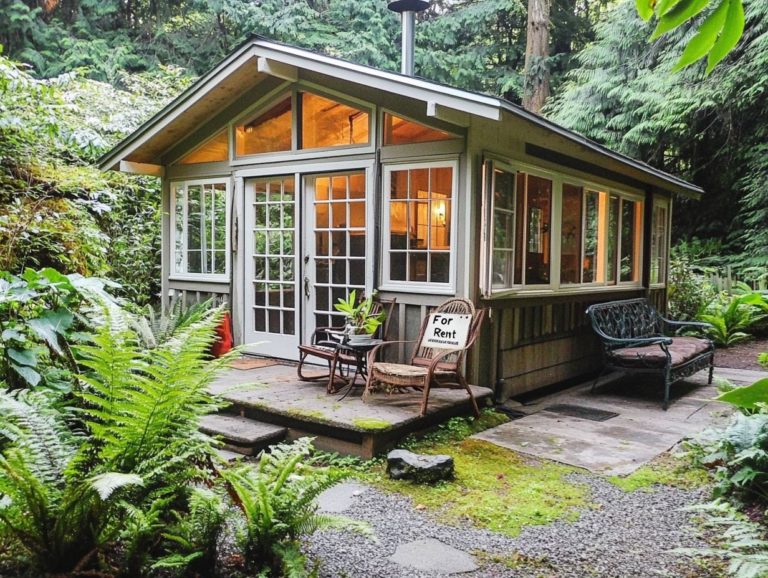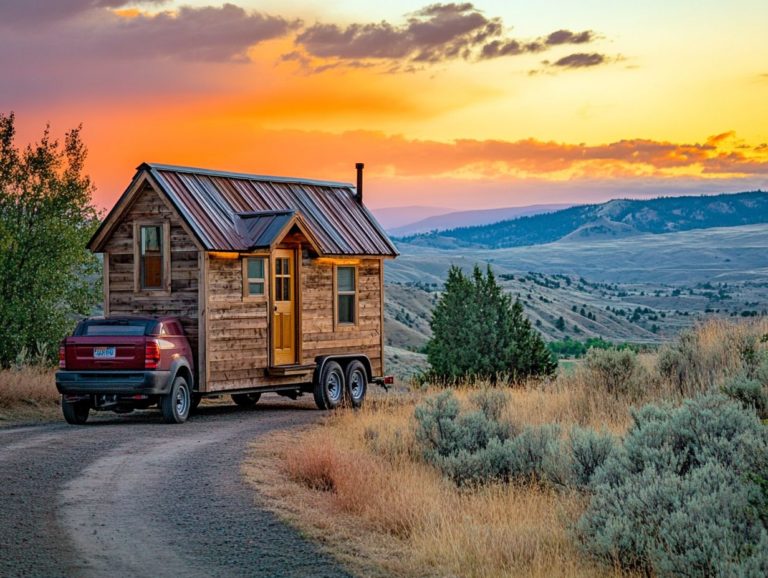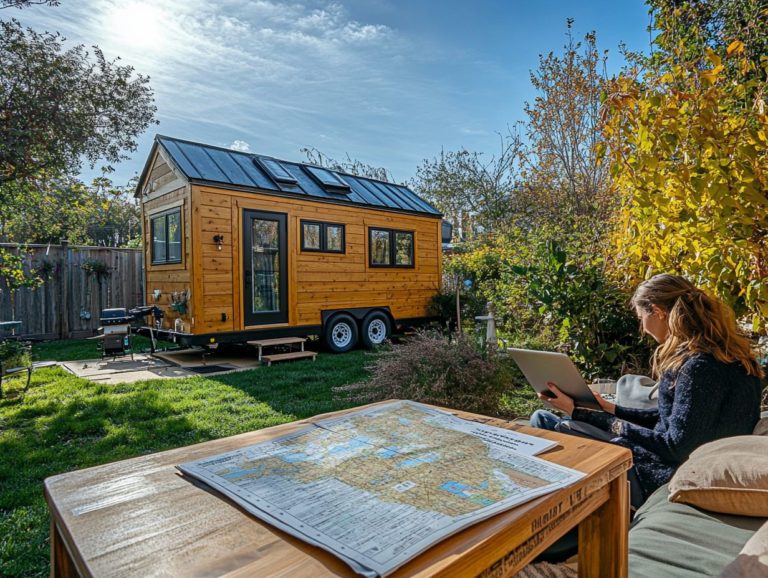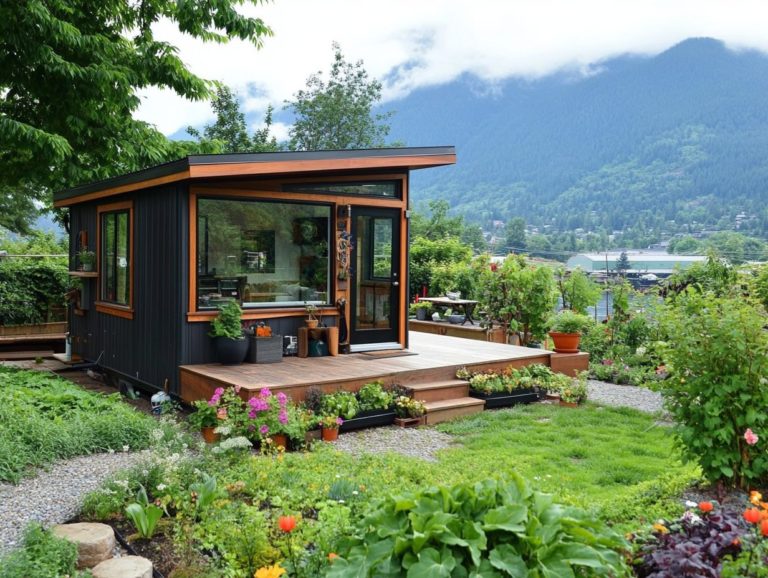How to Make a Tiny House Energy Efficient?
Tiny houses transcend mere trendiness; they embody a transformative lifestyle choice that emphasizes simplicity, sustainability, and efficiency.
You ll uncover the allure of tiny houses, exploring their eco-friendly advantages, significant cost savings, and innovative energy-efficient designs. Practical tips for maximizing space while using sustainable materials will be shared, alongside renewable energy options like solar and wind.
Embark on a journey to discover how to craft a functional and environmentally conscious tiny living space tailored to your needs.
Contents [hide]
- Key Takeaways:
- Benefits of Living in a Tiny House
- Energy Efficiency in Tiny Houses
- Designing an Energy Efficient Tiny House
- Renewable Energy Options for Tiny Houses
- Maximizing Space in a Tiny House
- Sustainable Materials for Tiny House Construction
- Frequently Asked Questions
- What is a tiny house and why should I make it energy efficient?
- What are some ways to make a tiny house energy efficient?
- Do I need to sacrifice comfort for energy efficiency in my tiny house?
- How can I use natural lighting to make my tiny house energy efficient?
- What are the benefits of using renewable energy sources in a tiny house?
- Can I make my tiny house energy efficient on a budget?
Key Takeaways:
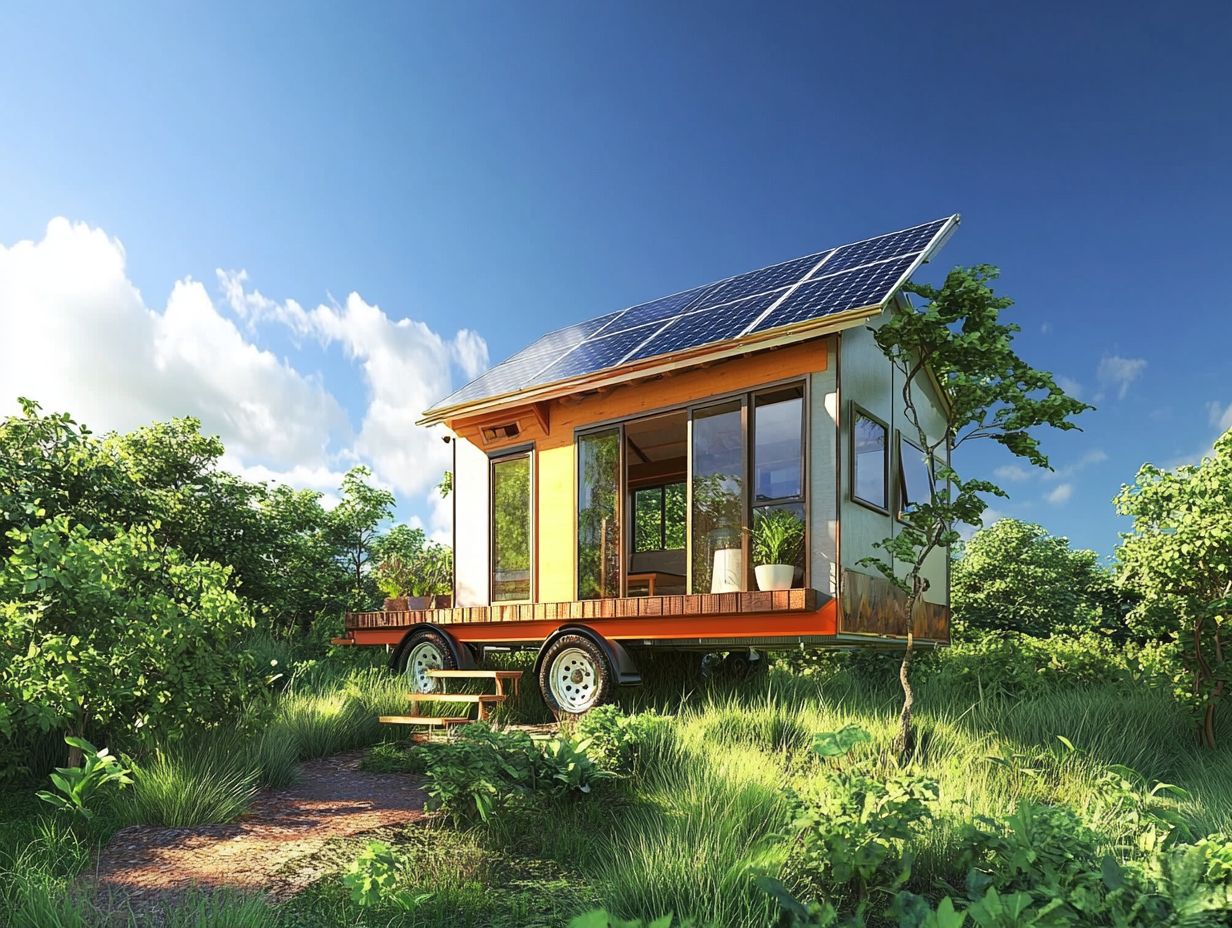
- Embrace a smaller space for a smaller carbon footprint! Tiny houses are eco-friendly and cost-effective due to lower energy use.
- Design smartly for ultimate efficiency! Focus on insulation, efficient appliances, and innovative design.
- Live sustainably! Use renewable energy, maximize space, and choose eco-friendly materials.
What is a Tiny House?
A tiny house, often dubbed a tiny home, is your gateway to a compact and sustainable living experience, typically ranging from 100 to 400 square feet. These homes are masterfully designed to promote energy efficiency and minimize your carbon footprint while maximizing both functionality and comfort.
With innovative designs like those crafted by Andrew using Sweet Home 3D you can incorporate clever insulation types and sustainable choices that cater to your environmentally-conscious lifestyle.
Originating in the early 2000s as a response to soaring housing costs and growing environmental concerns, tiny homes have witnessed a remarkable rise in popularity across North America. Their allure lies not just in affordability but in the freedom to live with less, encouraging a minimalist lifestyle that prioritizes experiences over material possessions.
These homes often embrace smart construction techniques, utilizing sustainable materials like reclaimed wood and eco-friendly insulation. For instance, in the Yukon, the challenging climate has spurred creative designs that prioritize energy efficiency and how well a home retains heat. If you’re considering this lifestyle, learn how to prepare for tiny house living, demonstrating the versatility and adaptability of tiny living.
Many are discovering the joys of downsizing. Enjoy the benefits of reduced upkeep, lower utility bills, and a deeper connection to nature!
Benefits of Living in a Tiny House
Embracing life in a tiny house presents a wealth of advantages, such as enhanced energy efficiency, a diminished carbon footprint, and a simpler and cheaper way of living. This choice is particularly appealing for those committed to sustainable living.
The minimalist lifestyle associated with tiny homes reduces maintenance costs. This approach also fosters environmentally conscious practices, resulting in significant energy savings over time.
Eco-Friendly and Cost-Effective Living
Eco-friendly and cost-effective living lies at the heart of the tiny home movement, where you can minimize space while maximizing resource use, leading to remarkable reductions in energy consumption and your carbon footprint. This lifestyle invites you to embrace sustainable choices, such as selecting energy-efficient appliances, ensuring that your home is not only budget-friendly but also environmentally responsible.
Beyond the allure of lower utility bills, tiny homes often showcase innovative designs that optimize energy flow and natural light, further enhancing your energy efficiency. By incorporating solar panels or rainwater harvesting systems, you can significantly reduce your reliance on traditional energy sources and cut down on water usage. Additionally, learning how to use technology for tiny home efficiency can further maximize your sustainable living experience.
These sustainable practices not only lead to considerable financial savings over time but also foster a deeper connection with nature. Ultimately, choosing a tiny home as your living space enables you to lead a lifestyle that aligns with your values, while inspiring others to explore the benefits of minimalism and eco-conscious living.
Energy Efficiency in Tiny Houses
Energy efficiency stands as a cornerstone of tiny houses. Advanced heating and cooling systems and energy-efficient appliances work harmoniously to minimize consumption and elevate comfort.
In these compact living spaces, you’ll often find high-efficiency heating, ventilation, and air conditioning (HVAC) systems designed to maintain optimal temperatures while dramatically cutting down on energy waste. For those looking to enhance their home’s sustainability, making a tiny house more energy efficient is essential. This makes tiny homes not just a trend but a true model for sustainable living.
Key Factors for Energy Efficiency
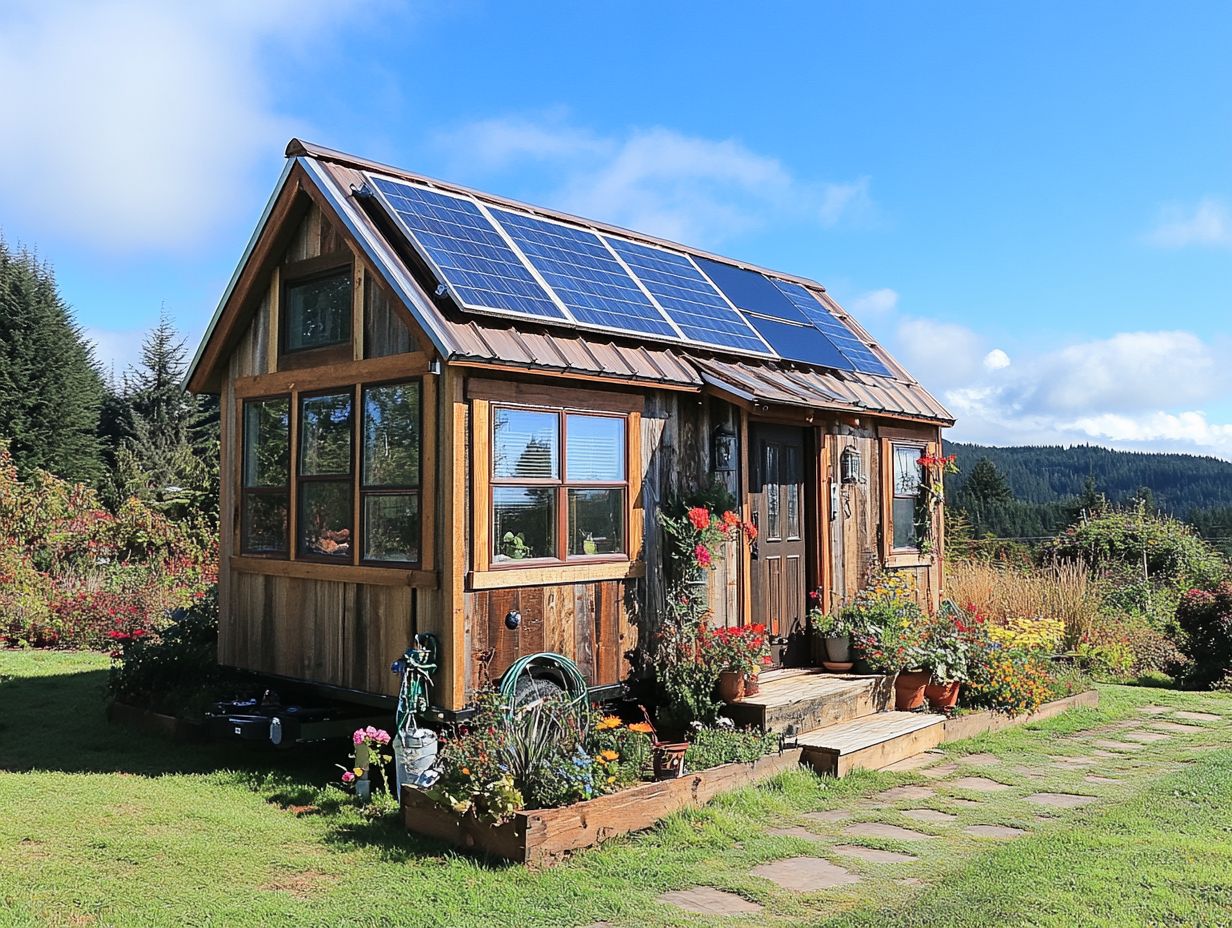
The key factors for achieving energy efficiency in your tiny house revolve around:
- Selecting the right heating and cooling systems
- Choosing effective insulation types
- Opting for energy-efficient lighting solutions like LED lights
By incorporating renewable energy sources such as solar panels, you can significantly enhance the sustainability of your home. This leads to lower energy consumption and a reduced carbon footprint.
Understanding the importance of insulation materials is essential. Options like spray foam or cellulose create effective barriers against temperature fluctuations, ensuring that your interior remains comfortable throughout the year.
Choosing the right heating system, like energy-efficient heat pumps or compact wood stoves, is crucial for overall efficiency.
Cooling systems are equally important. Strategically placed ceiling fans or portable air conditioning units can drastically reduce energy use while keeping you comfortable. Integrating smart home technology helps you manage energy use more effectively, allowing you to monitor usage in real time and make energy conservation an effortless part of your daily routine.
Designing an Energy Efficient Tiny House
Designing an energy-efficient tiny house requires strategically incorporating features such as radiant floor heating, mini-split heat pumps, and energy-efficient heaters. These features make your space cozy and help you save on energy bills!
By adding programmable thermostats, you can elevate your energy management further, enabling you to customize your heating and cooling to align perfectly with your daily routines.
Tips and Strategies for Energy Efficiency
Implementing practical tips and strategies for energy efficiency in tiny homes can lead to significant savings and environmental benefits. Start implementing these tips today and watch your savings grow!
- Utilize motion sensors for lighting control
- Install tankless water heaters for on-demand hot water
- Opt for composting toilets to enhance sustainability
Integrating smart technology, like programmable thermostats, allows you to achieve optimal climate control. Not only does this improve your comfort, but it also minimizes energy consumption.
When it comes to appliances, embracing energy-efficient choices such as LED lights, Energy Star-rated refrigerators, and induction cooktops can greatly reduce your overall power usage.
On the water conservation front, think about adding low-flow faucets and rainwater harvesting systems to manage your resources efficiently. By embracing these innovative solutions, you can strike a harmonious balance between modern living and eco-friendly practices, ultimately contributing to a more sustainable lifestyle.
Renewable Energy Options for Tiny Houses
Renewable energy options for tiny houses, such as solar panels and wind energy, are essential for achieving energy autonomy and maximizing cost efficiency.
By embracing these sustainable choices, you decrease your dependence on non-renewable resources and realize substantial energy savings while minimizing your carbon footprint over time.
Solar, Wind, and Other Alternatives
Solar panels and wind energy are top renewable energy choices for tiny homes. They provide clean energy and help reduce your carbon footprint.
But don t stop there explore other renewable options like geothermal heating and biomass systems, which are also gaining popularity in compact living spaces. Each of these technologies offers unique advantages, enabling you to lessen your dependence on traditional power sources with ease.
For example, incorporating geothermal systems can provide you with a highly efficient heating solution all year round. Biomass, which is energy from organic materials like plants and waste, can serve as a dependable backup energy source. When assessing the feasibility of these investments, consider local climate, available resources, and your budget. However, the long-term benefits often far outweigh the initial costs.
Embrace renewable energy in your tiny home! It boosts your energy independence and helps the planet. Explore sustainable design practices for tiny houses to enhance your eco-friendly living.
Maximizing Space in a Tiny House
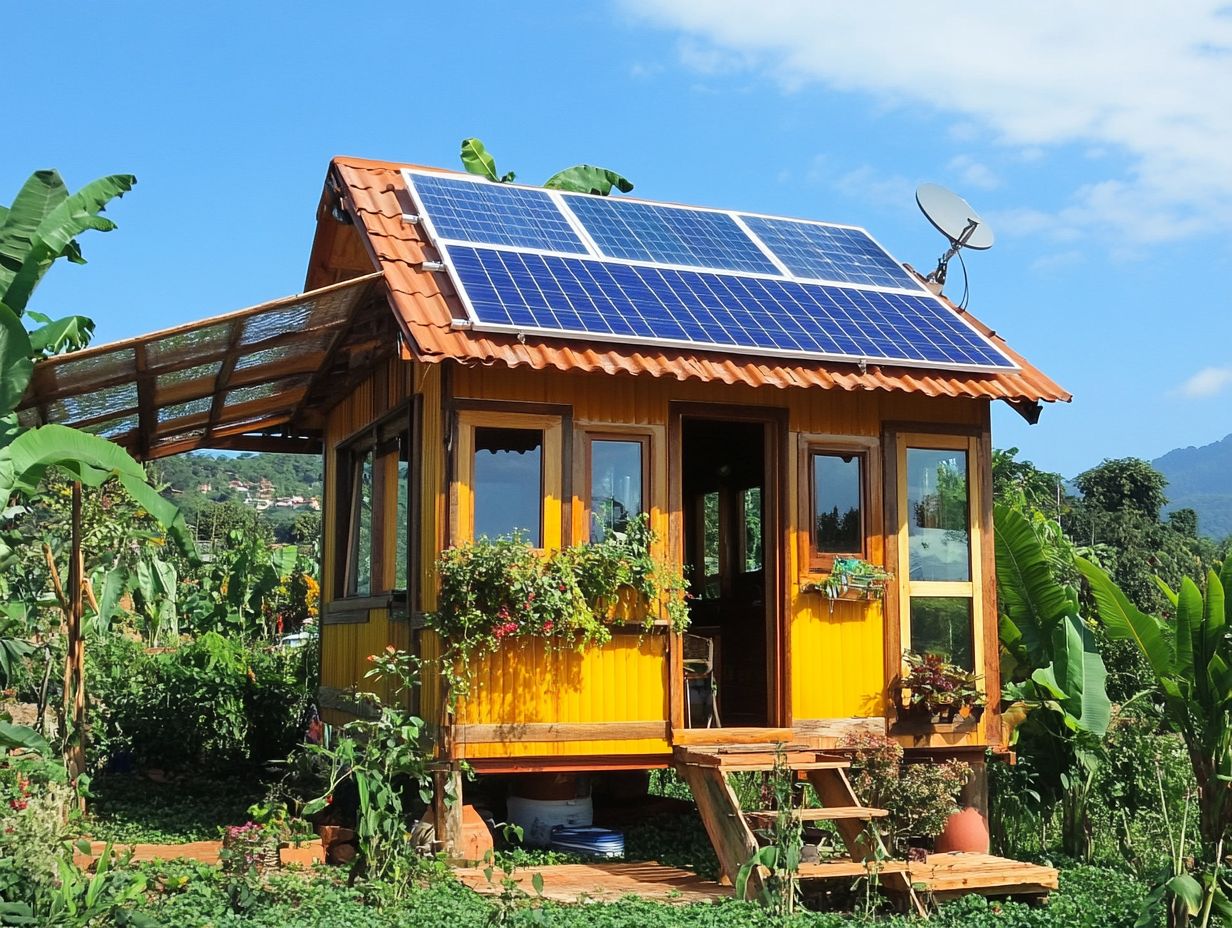
Maximizing space in your tiny home is crucial for crafting a functional and inviting living environment. This endeavor often inspires innovative storage solutions and savvy organization tips.
By embracing multi-functional furniture and space-saving designs, you can make the most of every square foot while maintaining a sense of style and comfort.
Storage and Organization Tips
Effective storage and organization tips can transform your tiny home into a stunning oasis of functionality and efficiency. Embracing modular furniture and under-bed storage allows you to optimize every inch of available space.
By thoughtfully planning your layout and employing creative storage solutions, you can achieve a clutter-free environment that nurtures a serene lifestyle.
Incorporating vertical shelving units, multifunctional furniture pieces, and hidden compartments significantly enhances your living experience in compact areas. Wall-mounted hooks for items like bicycles or kitchen utensils free up valuable floor space and inject a touch of personal flair into your surroundings. Colorful bins and baskets serve as clever storage solutions and decorative accents, making organization visually appealing.
By maximizing vertical space and adopting a minimalist mindset, you can cultivate a harmonious atmosphere that feels both spacious and inviting.
Sustainable Materials for Tiny House Construction
Opting for sustainable materials in tiny house construction guarantees eco-friendly choices and significantly boosts the durability and longevity of your structure.
By adhering to building codes and selecting materials with a reduced environmental footprint, you can craft tiny homes that are both aesthetically pleasing and responsibly built. Additionally, learning how to maximize storage in a tiny house can further enhance your living space.
Eco-Friendly and Durable Options
Eco-friendly and durable materials, like reclaimed wood and bamboo, are becoming increasingly sought after in tiny home construction. These materials offer the perfect blend of sustainability and strength. Make your tiny home not only appealing but also a responsible choice for the planet by choosing materials that excel in how well the house uses energy.
Materials such as cork and straw bales are gaining attention for their impressive insulation properties. They help maintain a comfortable indoor climate while minimizing energy consumption. Natural fibers, like hemp and cotton, are also making their mark in insulation and finishes, further reducing your carbon footprint. These eco-friendly options not only boost the home’s thermal efficiency but also promote healthier indoor air quality.
Every decision you make throughout the construction process can significantly lessen your environmental impact. Tiny homes can serve as shining examples of sustainable living that showcase a commitment to environmentally friendly habits.
Frequently Asked Questions
What is a tiny house and why should I make it energy efficient?
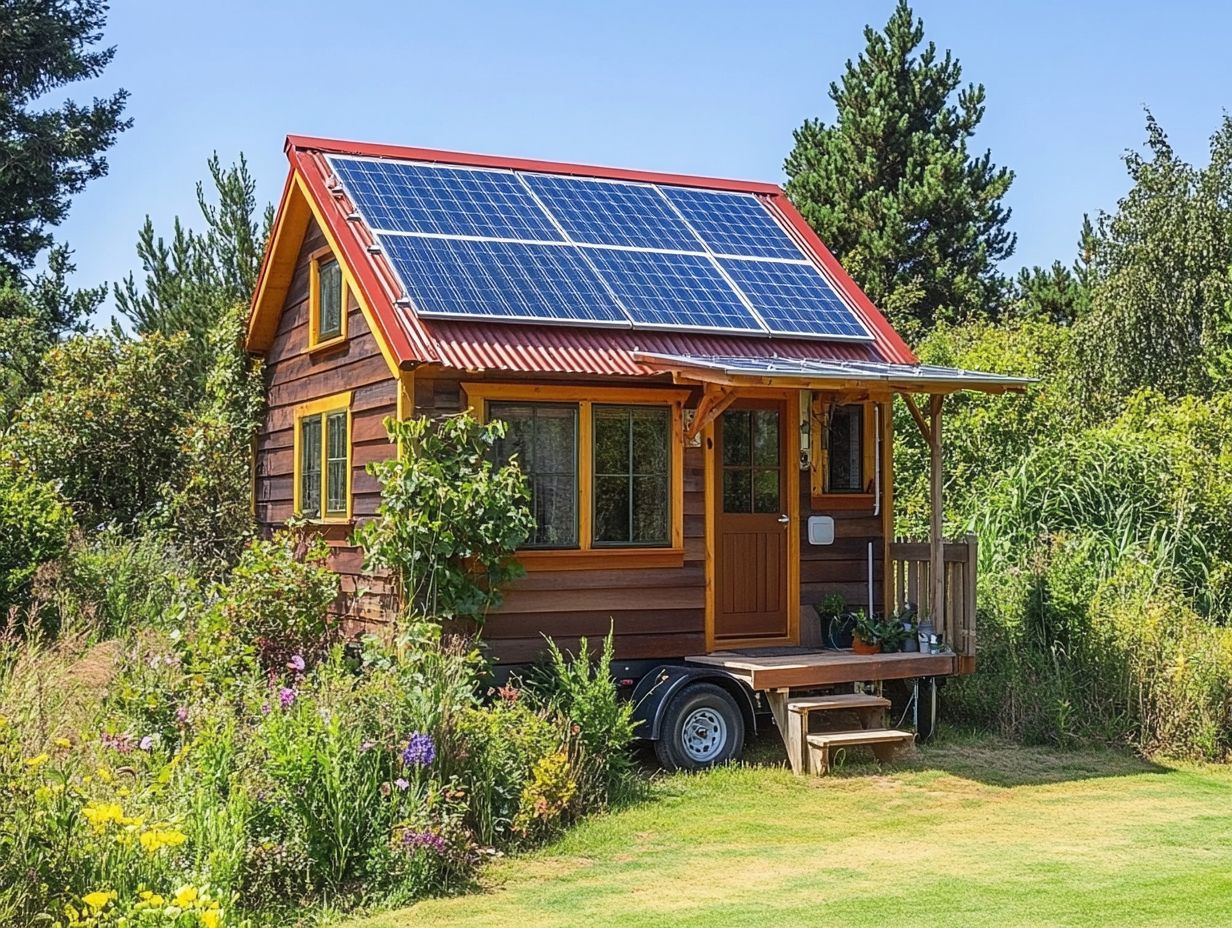
A tiny house is a small living space typically under 500 square feet, designed to be environmentally friendly and cost-effective. Making it energy efficient can help you save money on utility bills and reduce your carbon footprint.
What are some ways to make a tiny house energy efficient?
Some ways to make a tiny house energy efficient include using energy-efficient appliances, installing insulation, utilizing natural lighting, and employing renewable energy sources.
Do I need to sacrifice comfort for energy efficiency in my tiny house?
No, you do not have to sacrifice comfort for energy efficiency. With proper insulation and the use of energy-efficient appliances, you can maintain a comfortable living space while reducing energy consumption.
How can I use natural lighting to make my tiny house energy efficient?
Installing windows and skylights in strategic locations can provide natural light, reducing the need for artificial lighting. You can also use light-colored walls and furniture to reflect light and make your space brighter.
What are the benefits of using renewable energy sources in a tiny house?
Using renewable energy sources such as solar panels or wind turbines can significantly reduce your energy consumption. This choice can save you money in the long run, help reduce your carbon footprint, and make your tiny house more environmentally friendly.
Can I make my tiny house energy efficient on a budget?
Yes, there are many budget-friendly ways to make your tiny house energy efficient. These include using energy-efficient appliances, DIY insulation, and utilizing natural lighting. You can also consider using recycled or repurposed materials for your tiny house construction.

